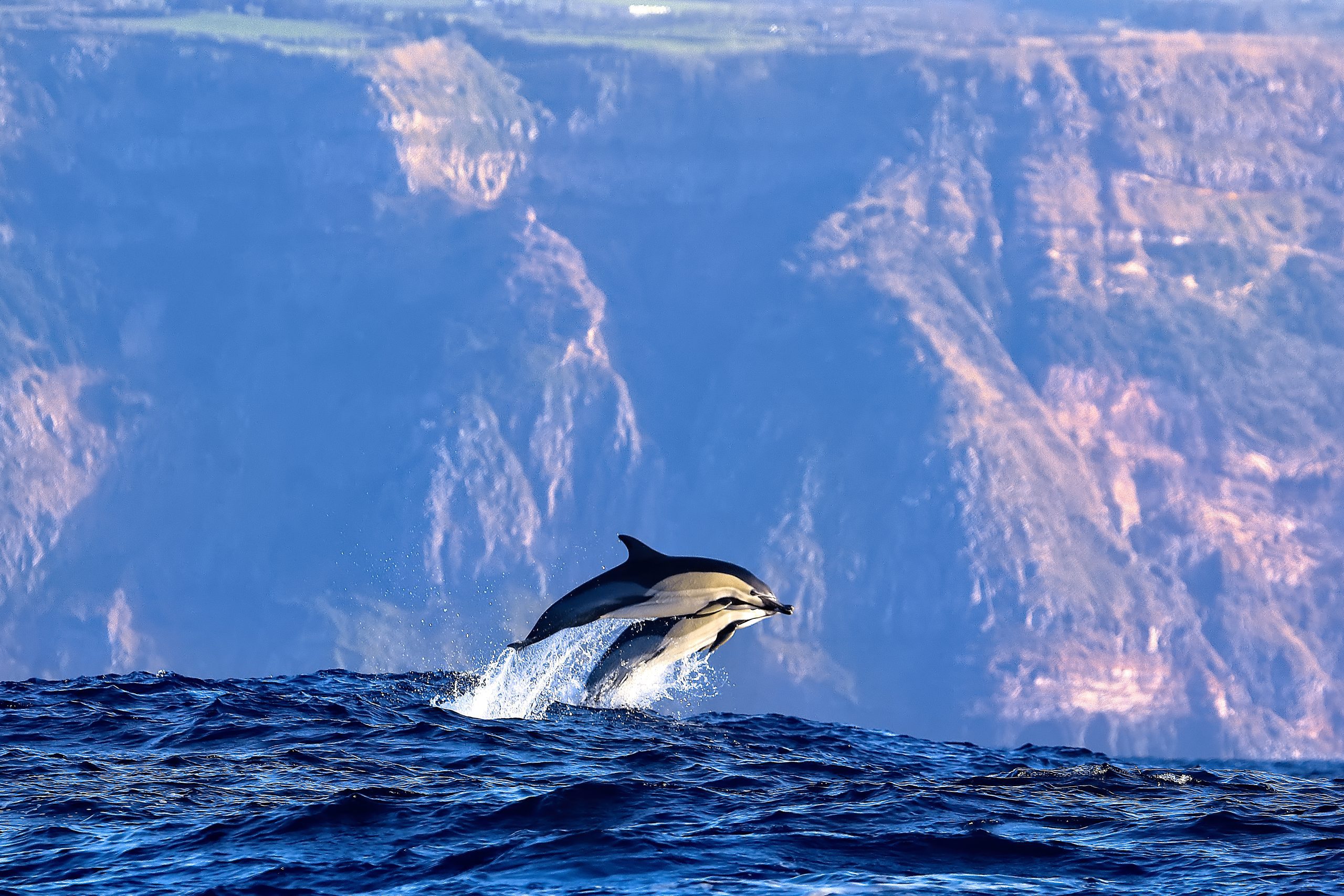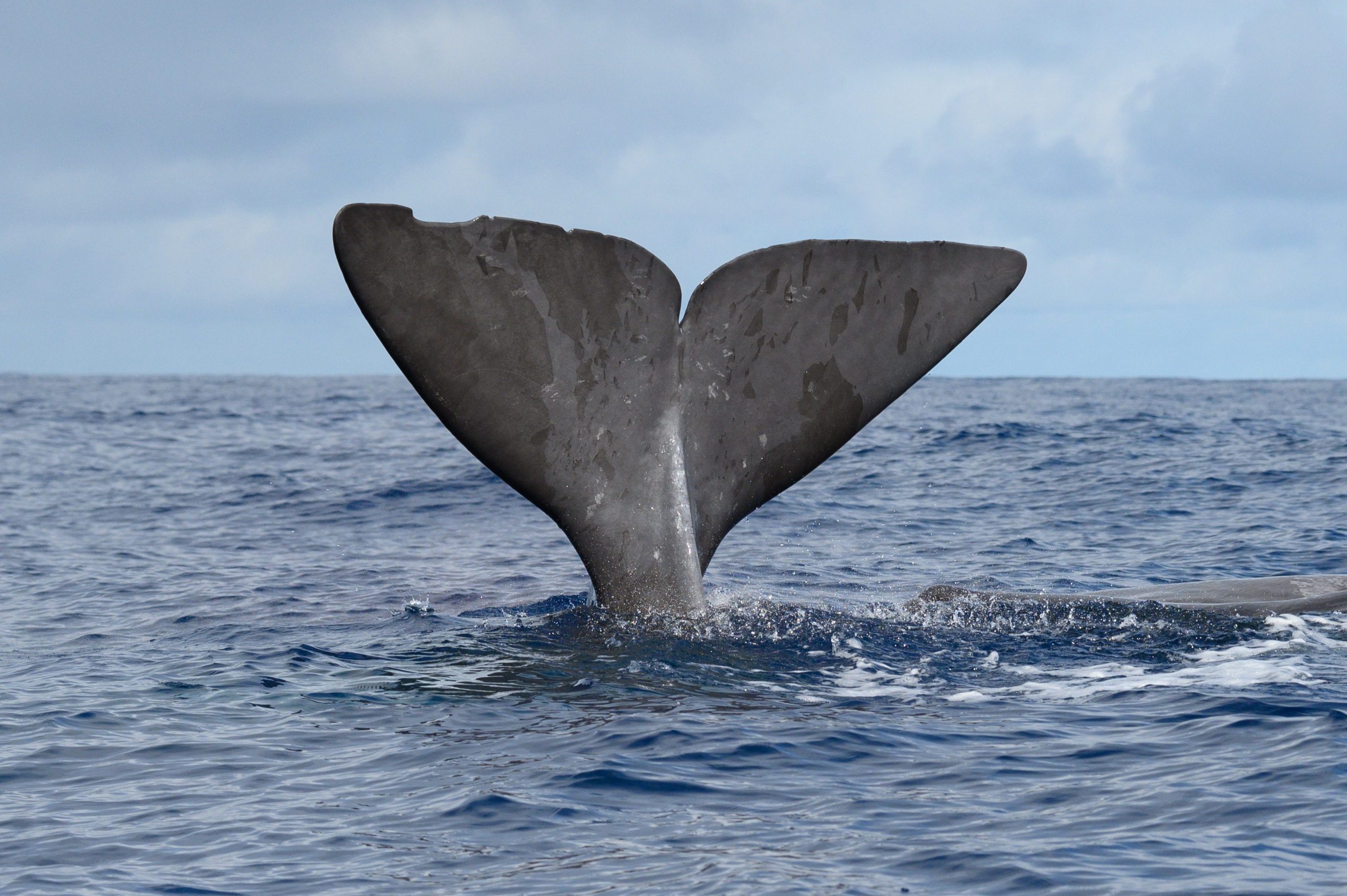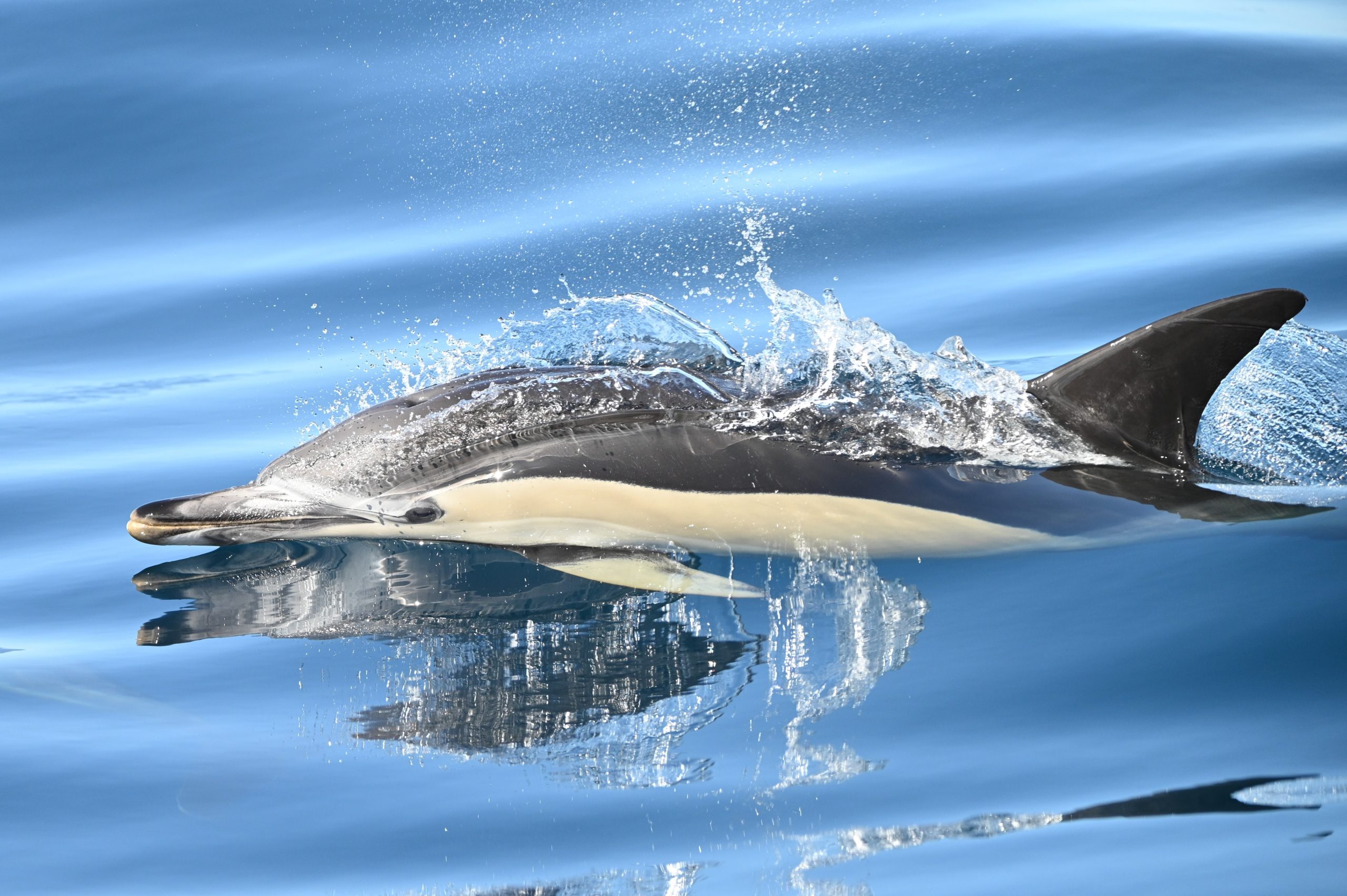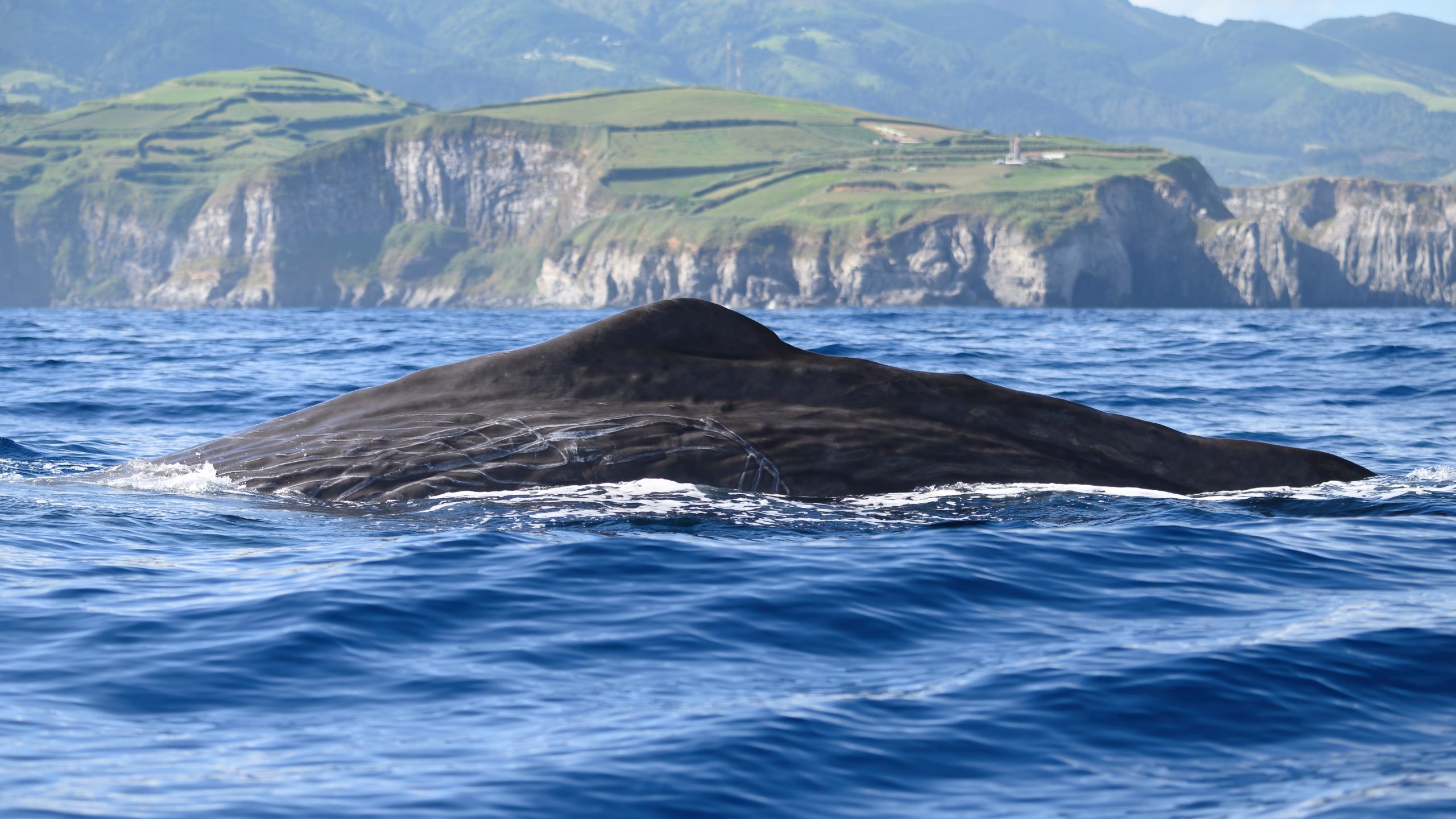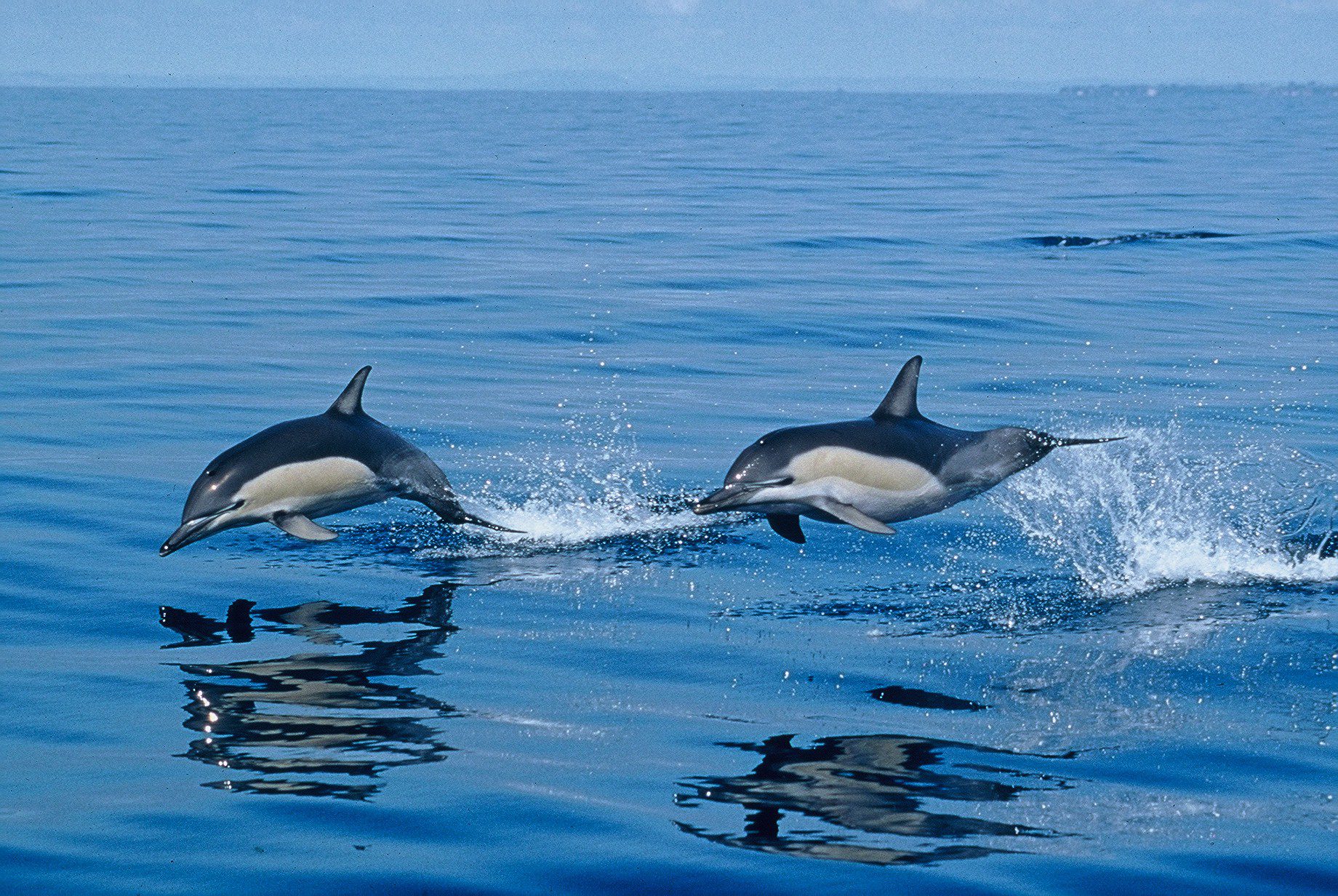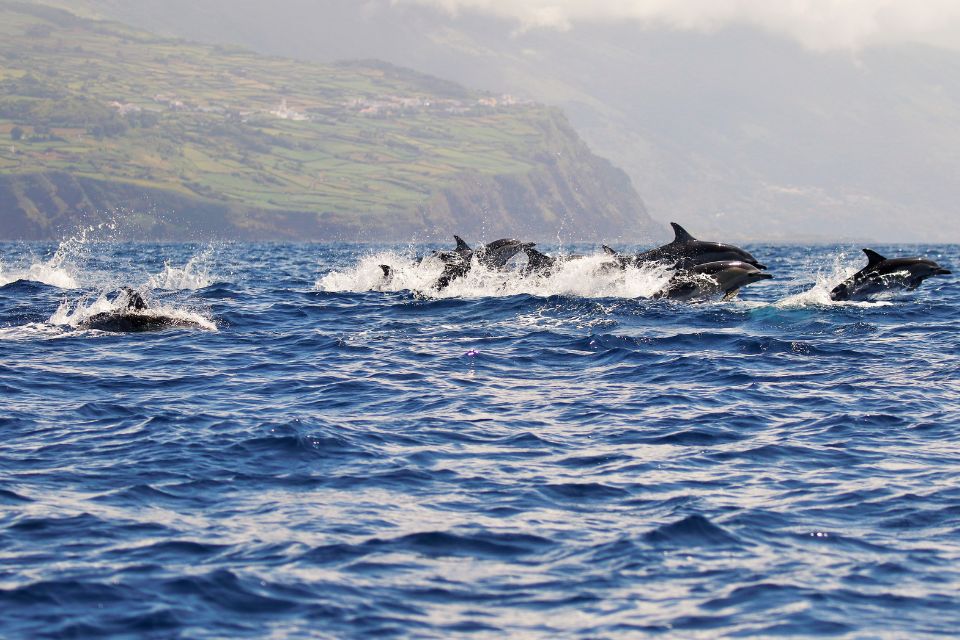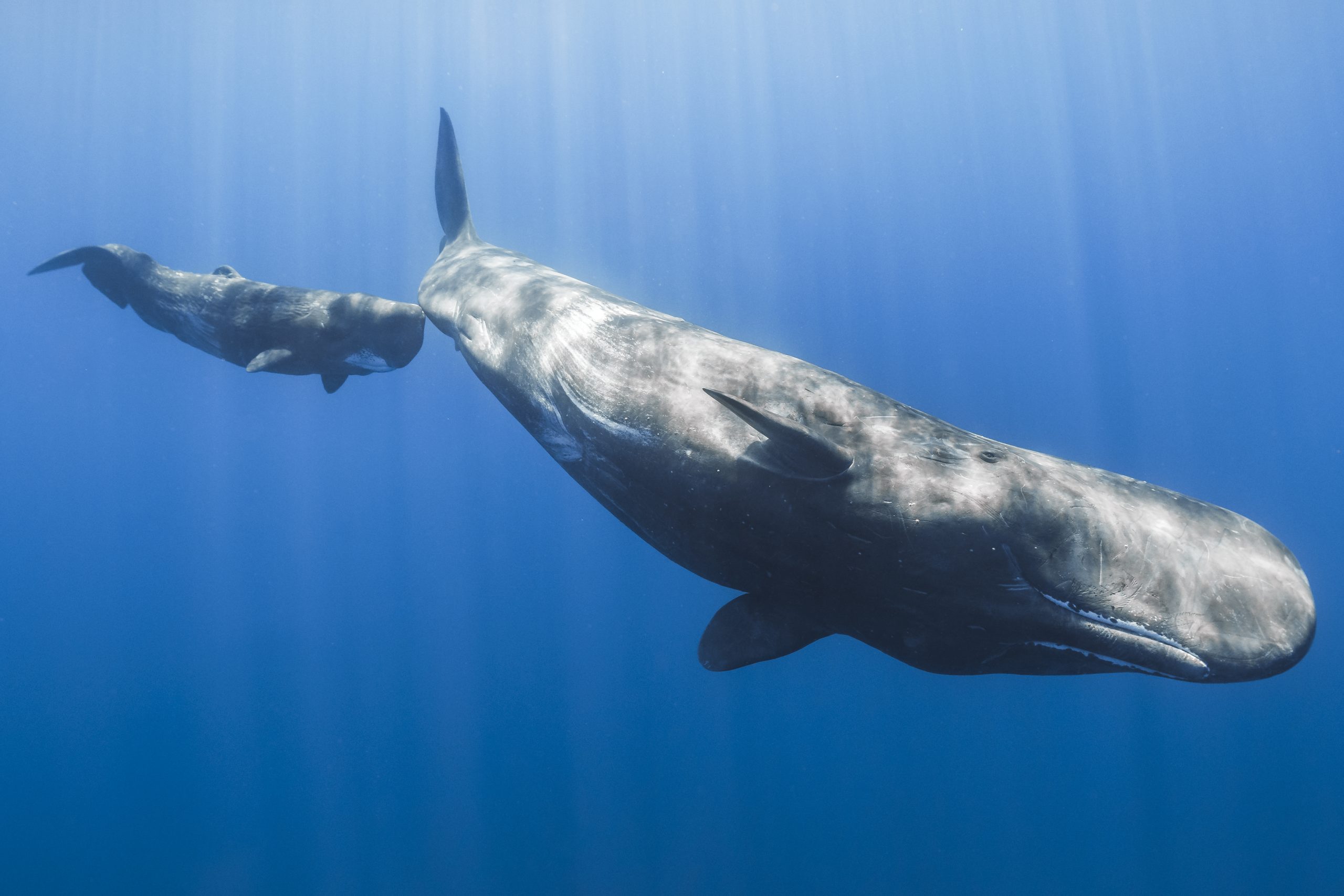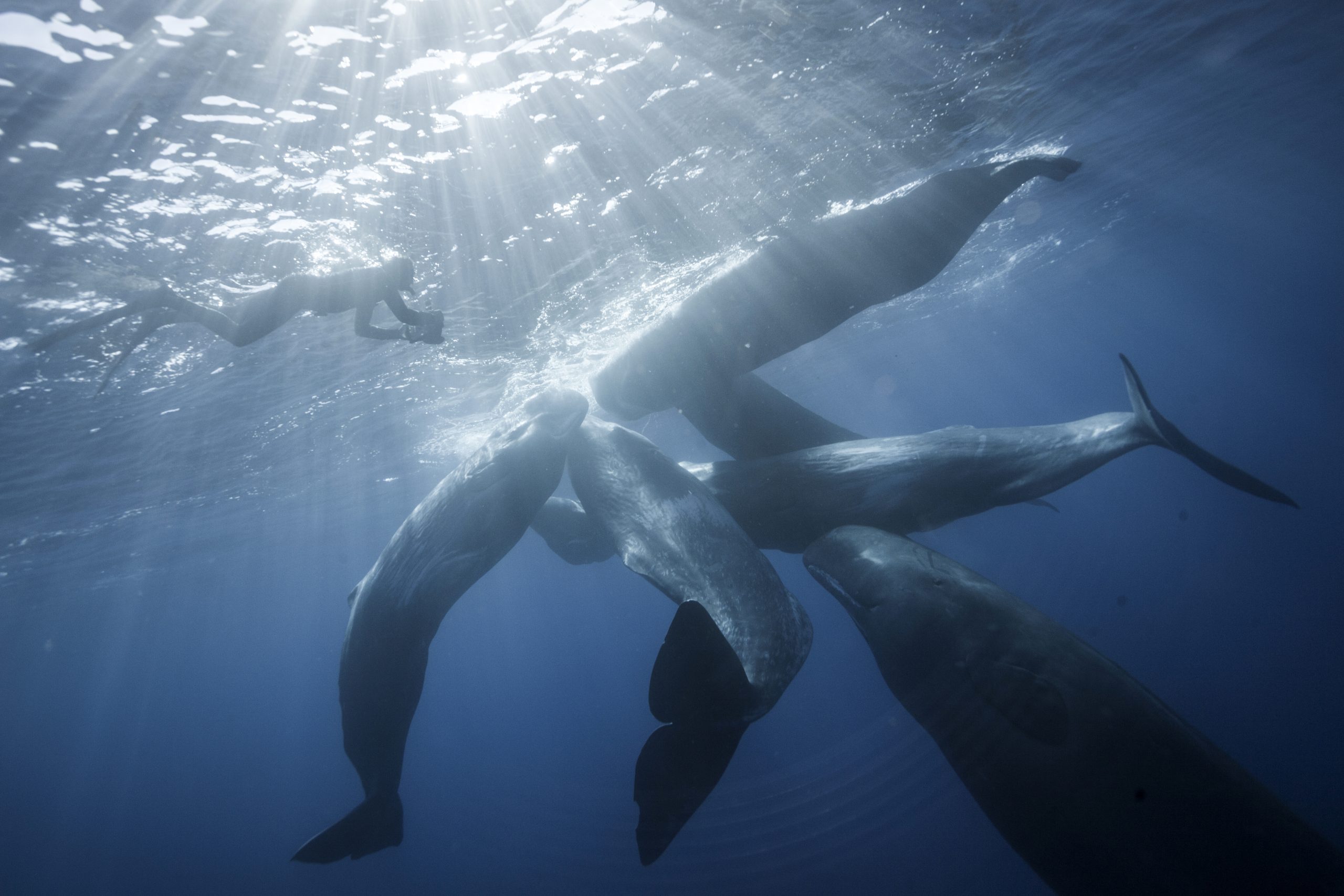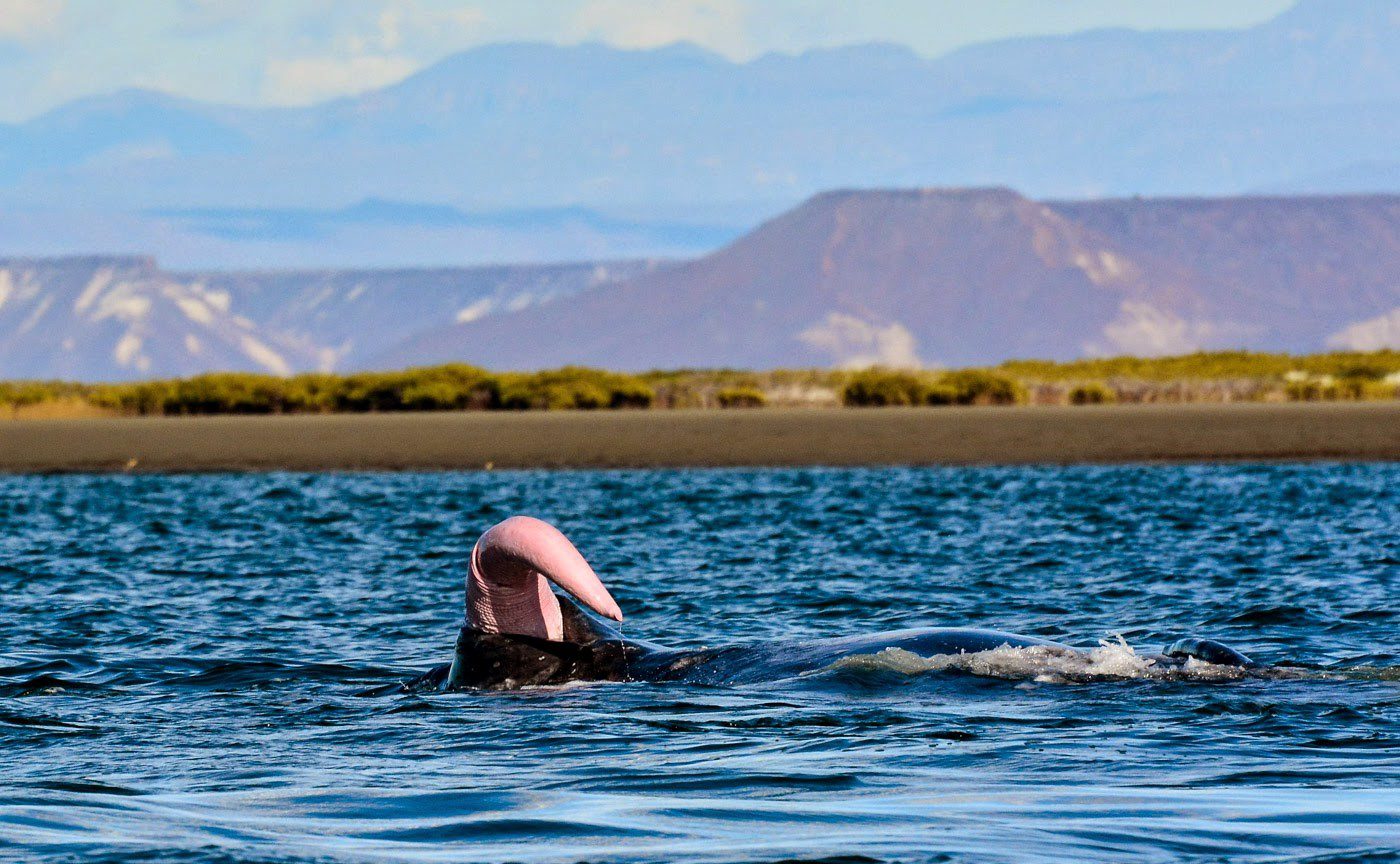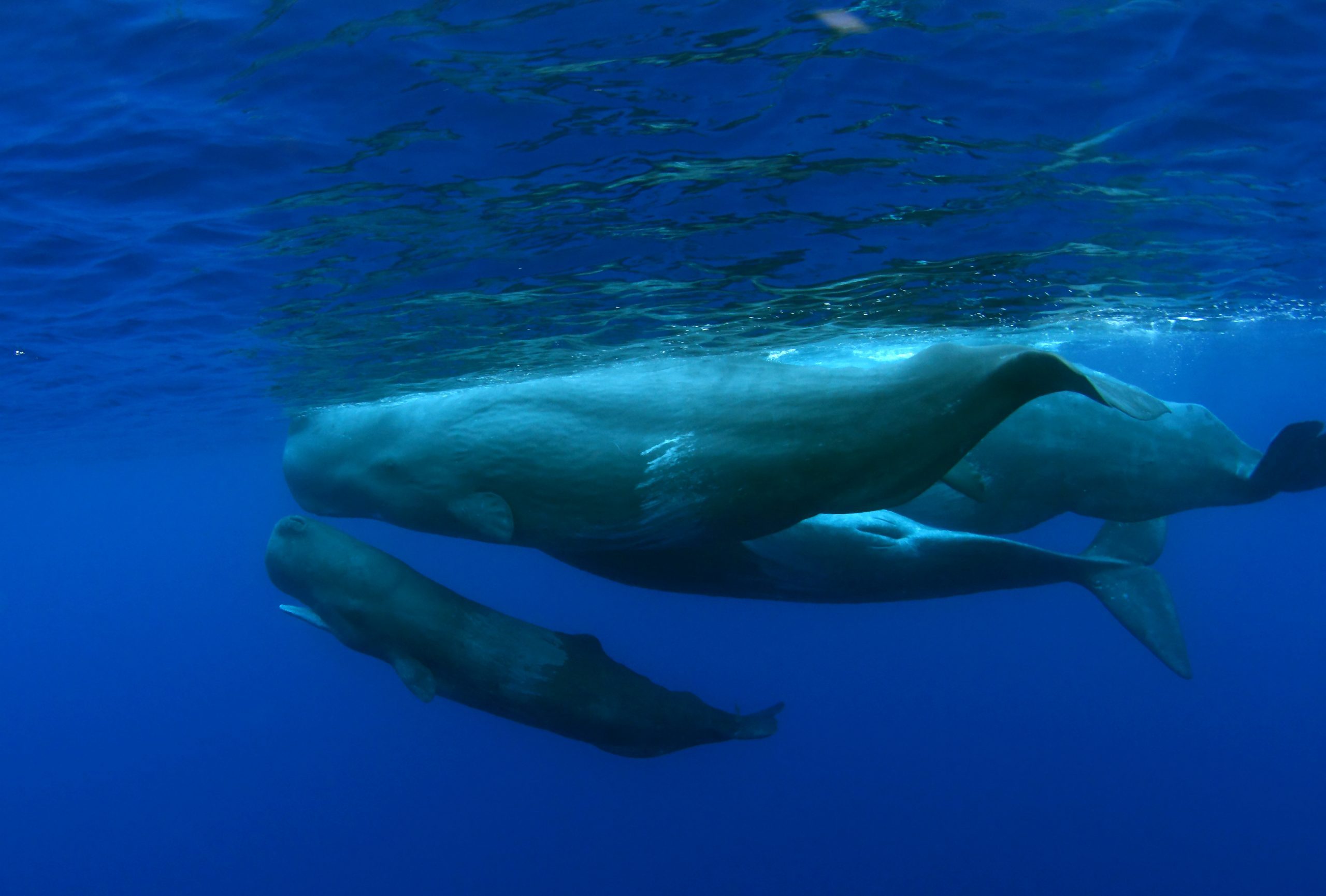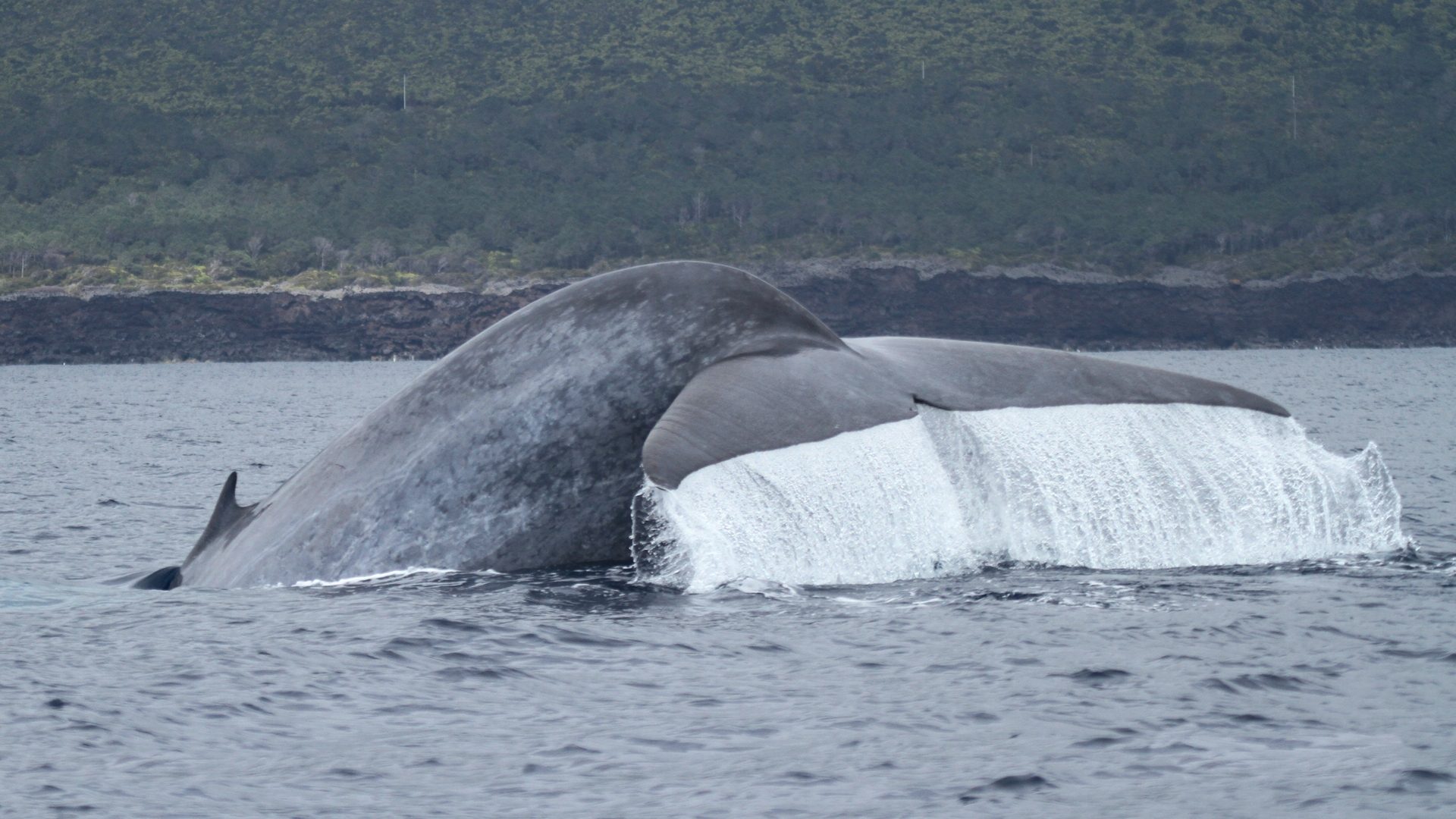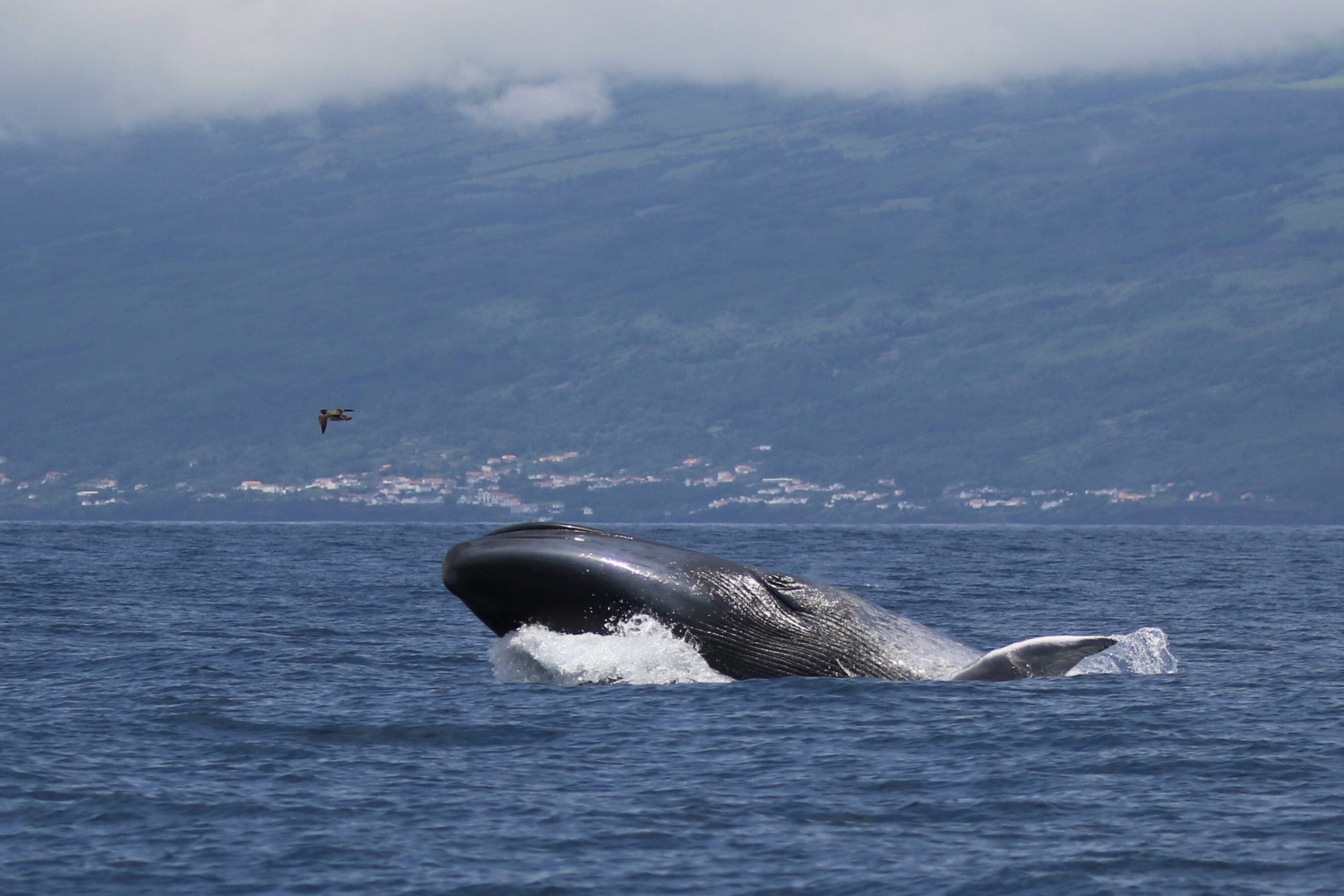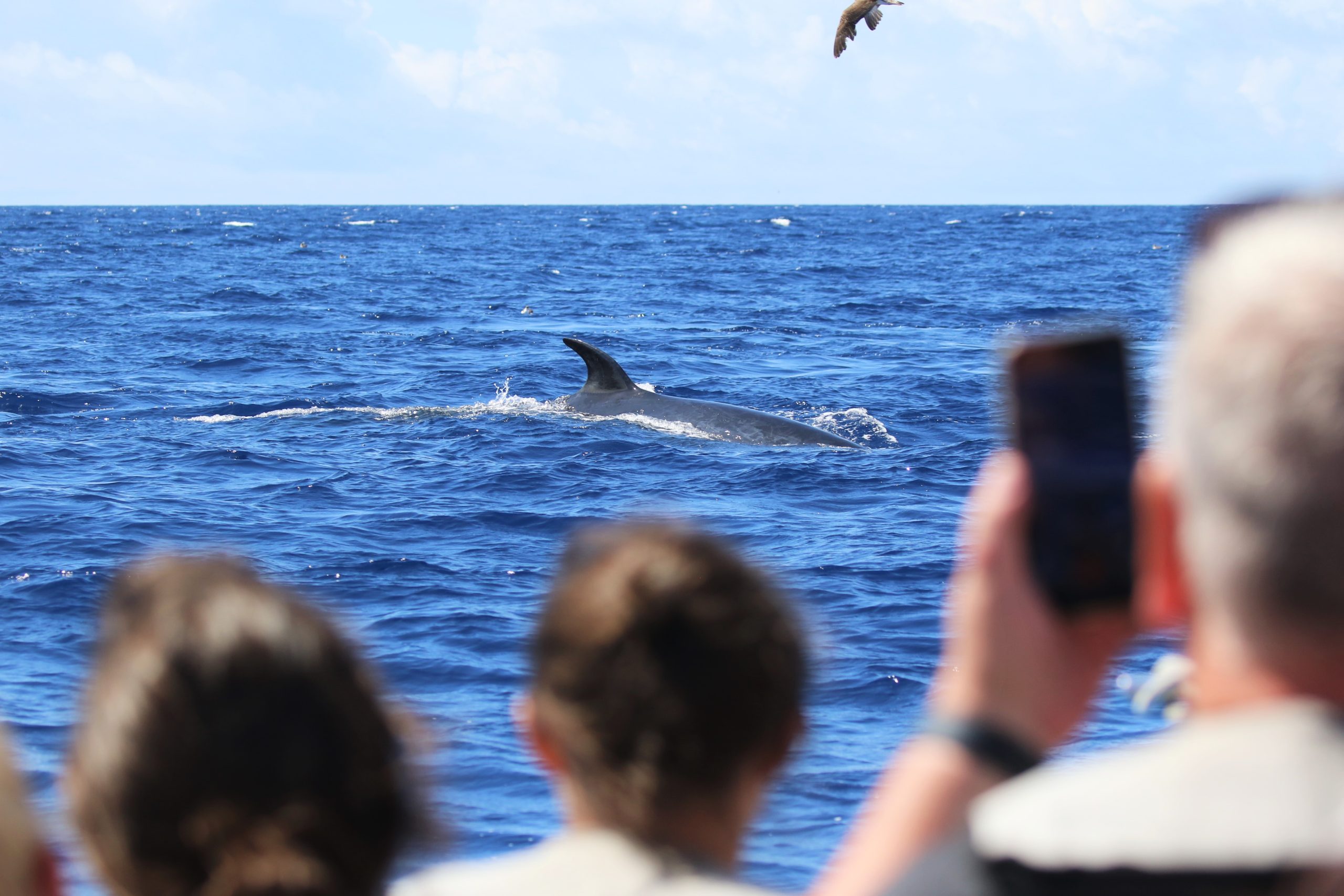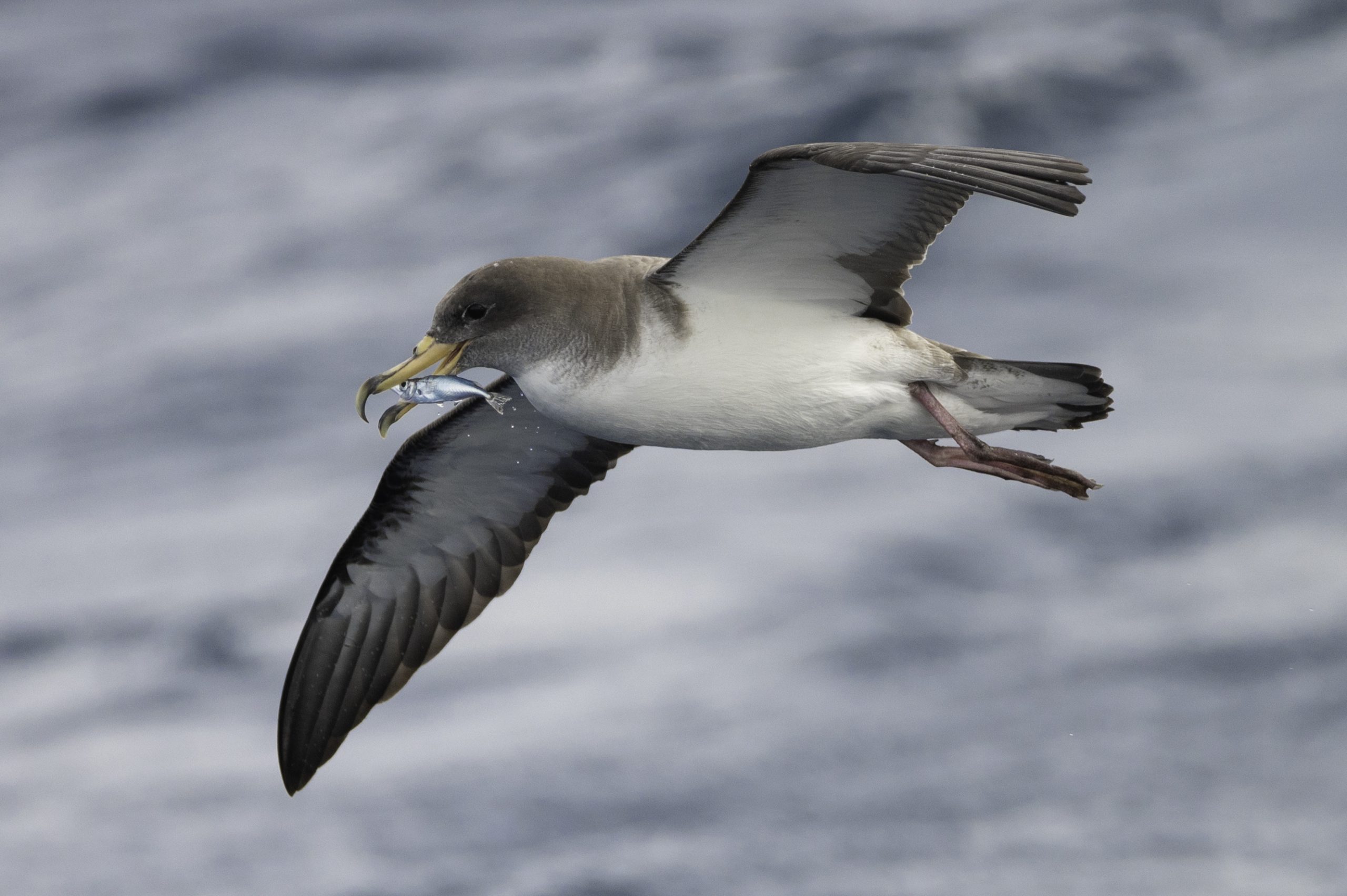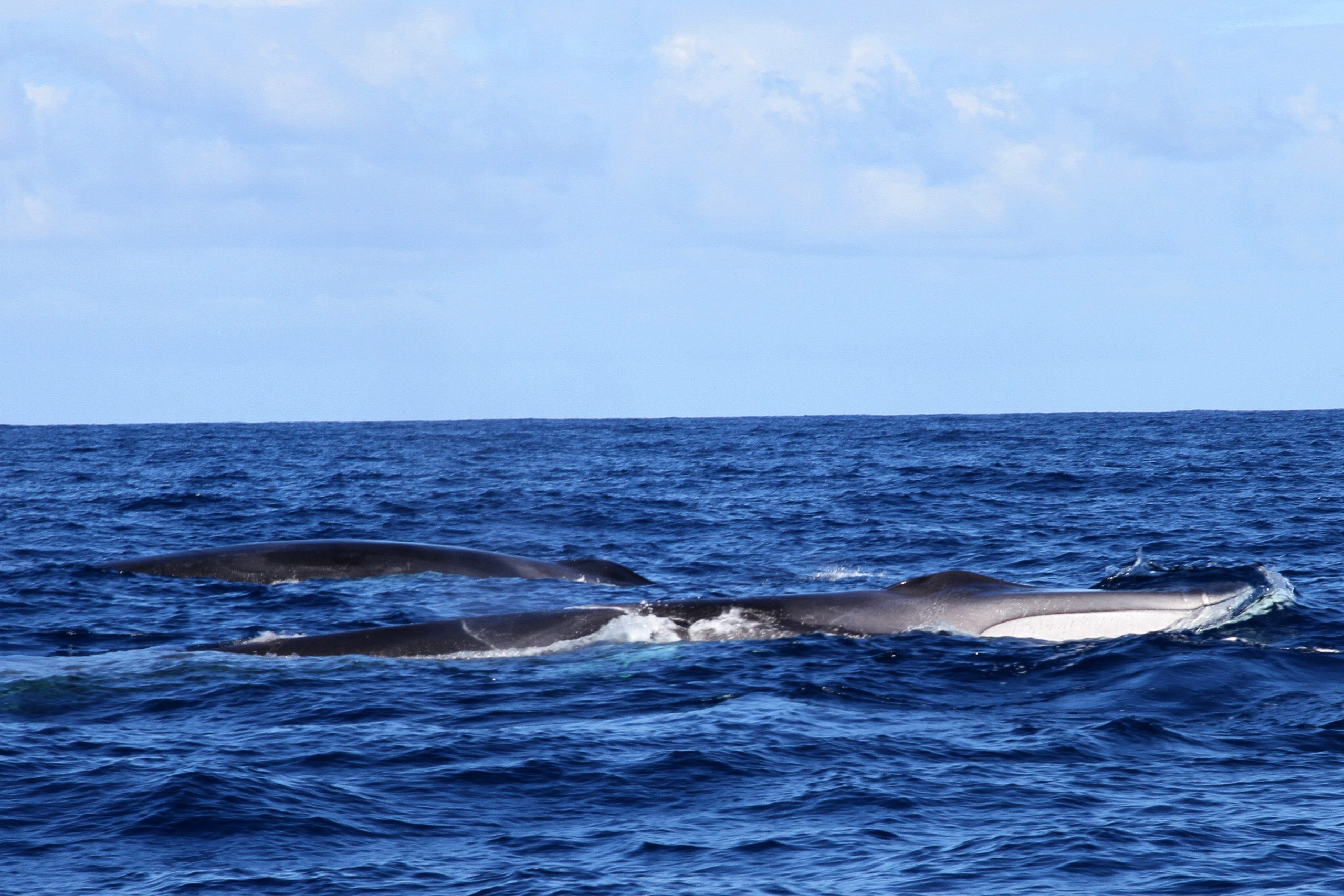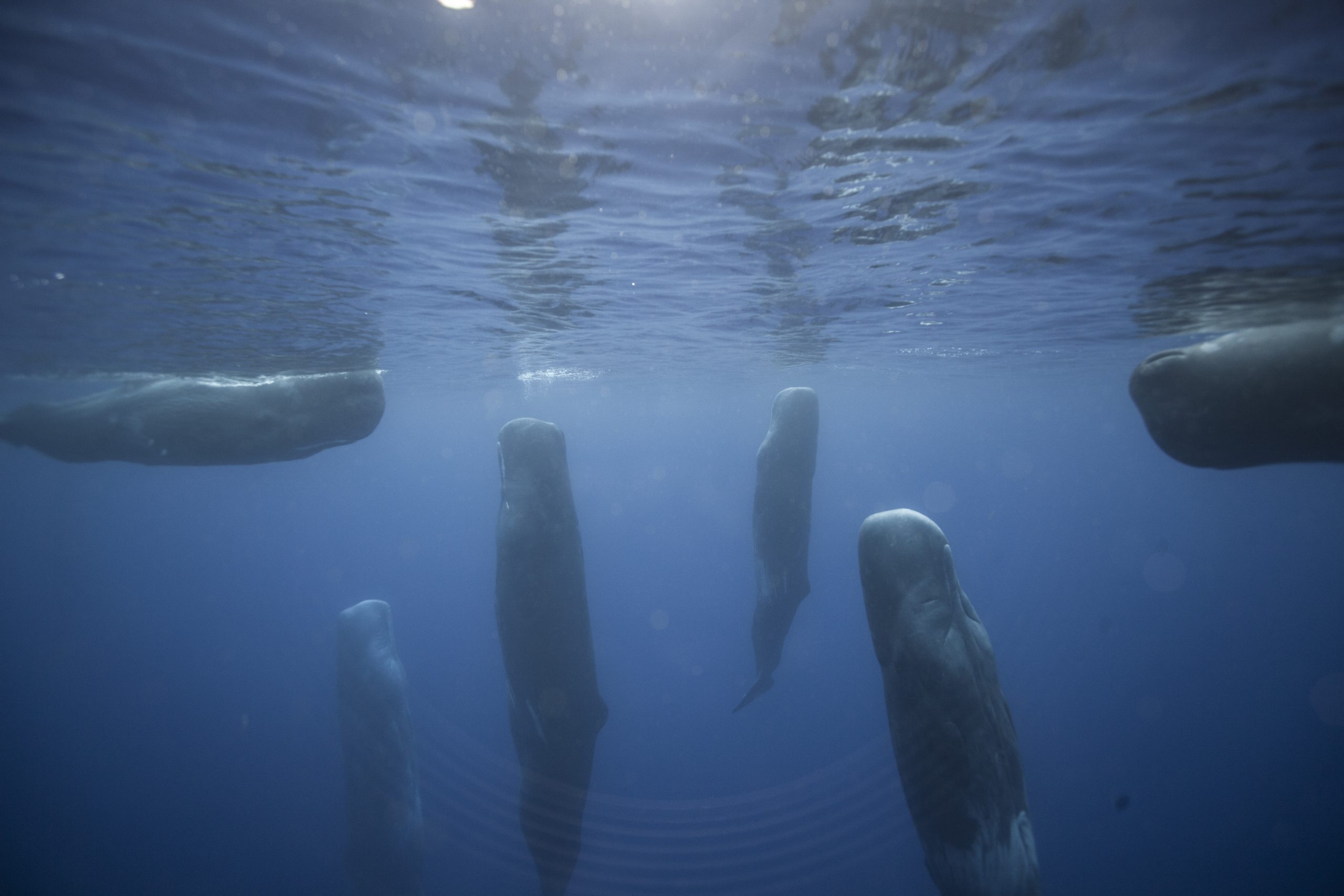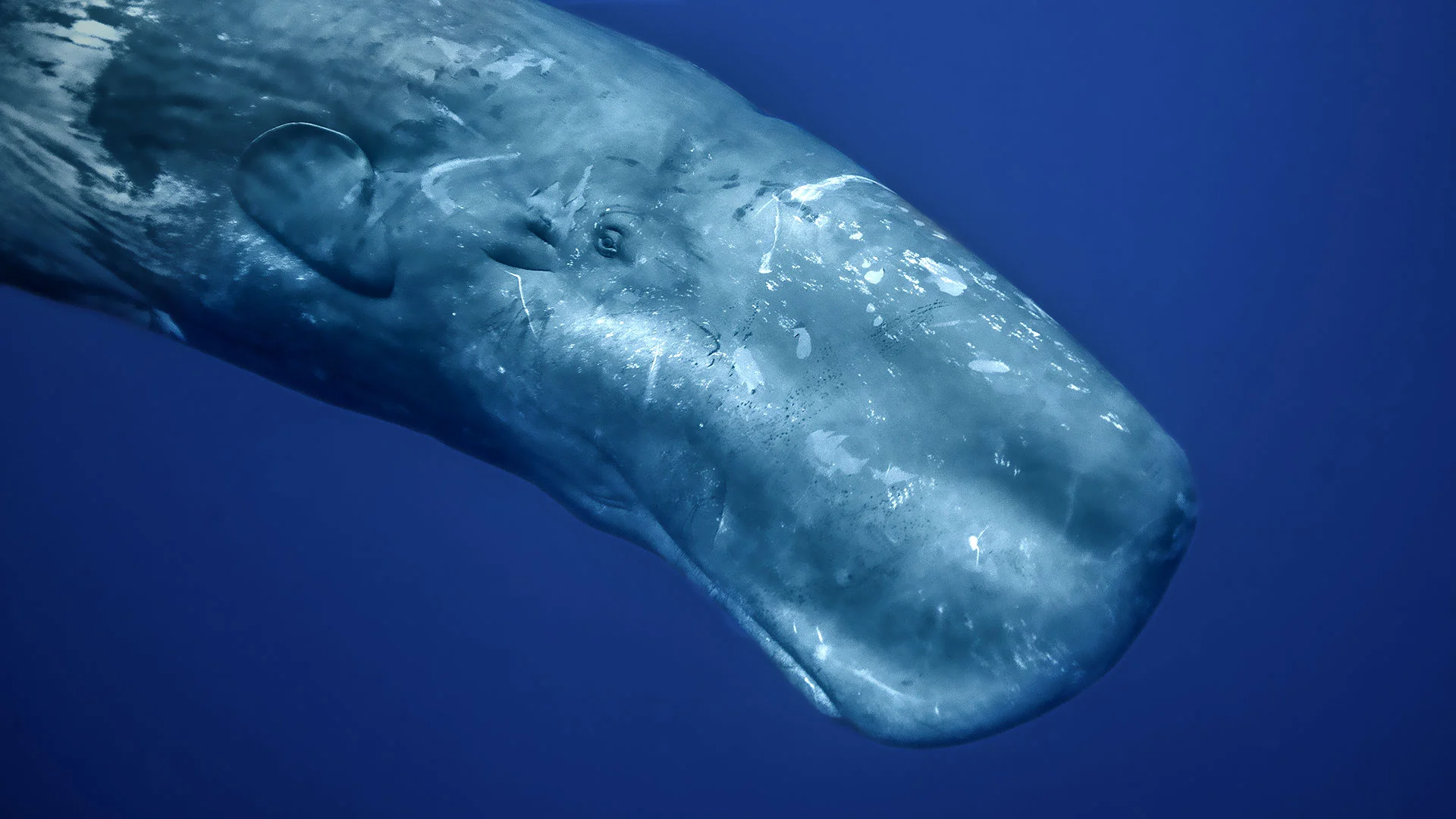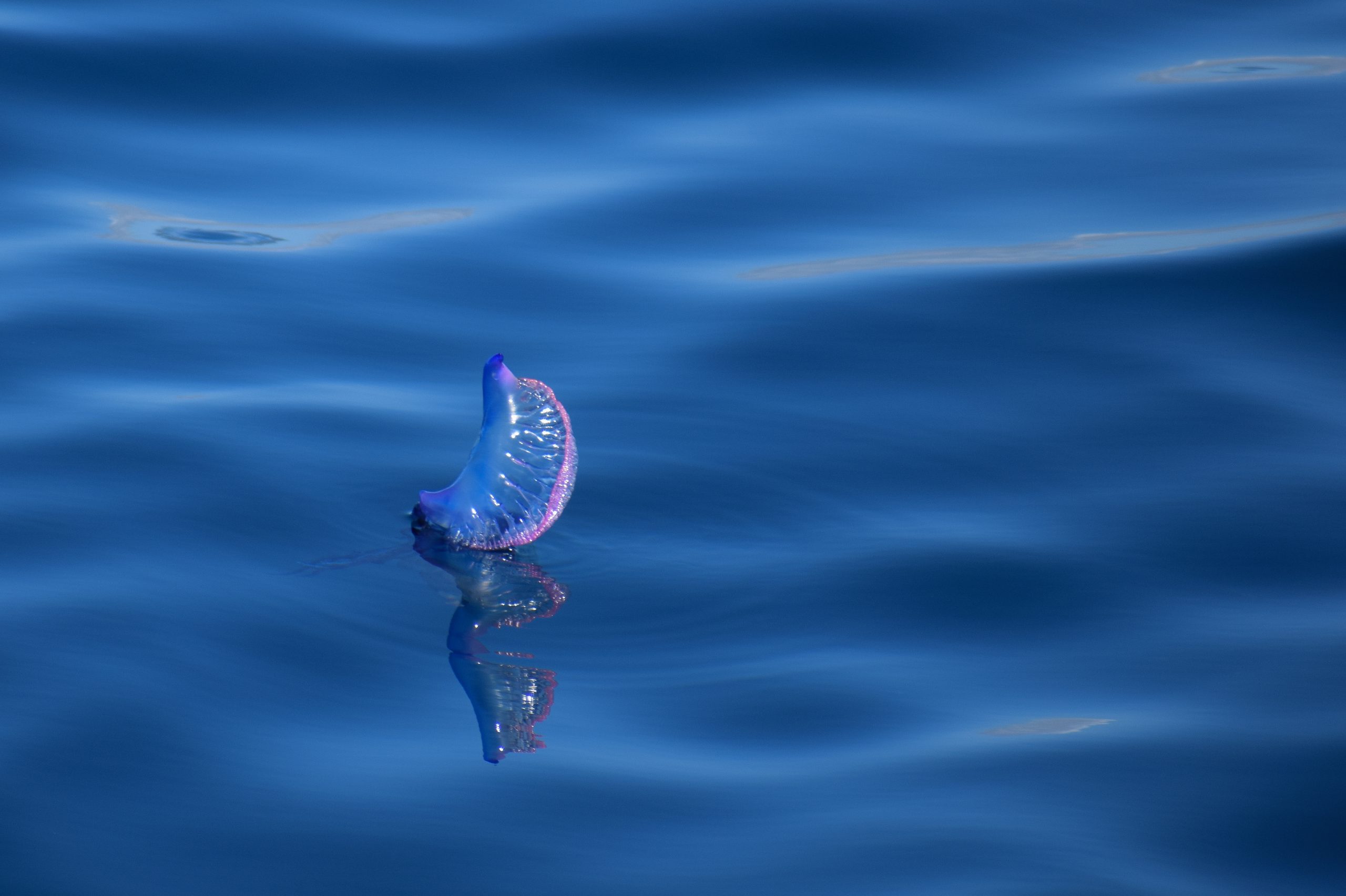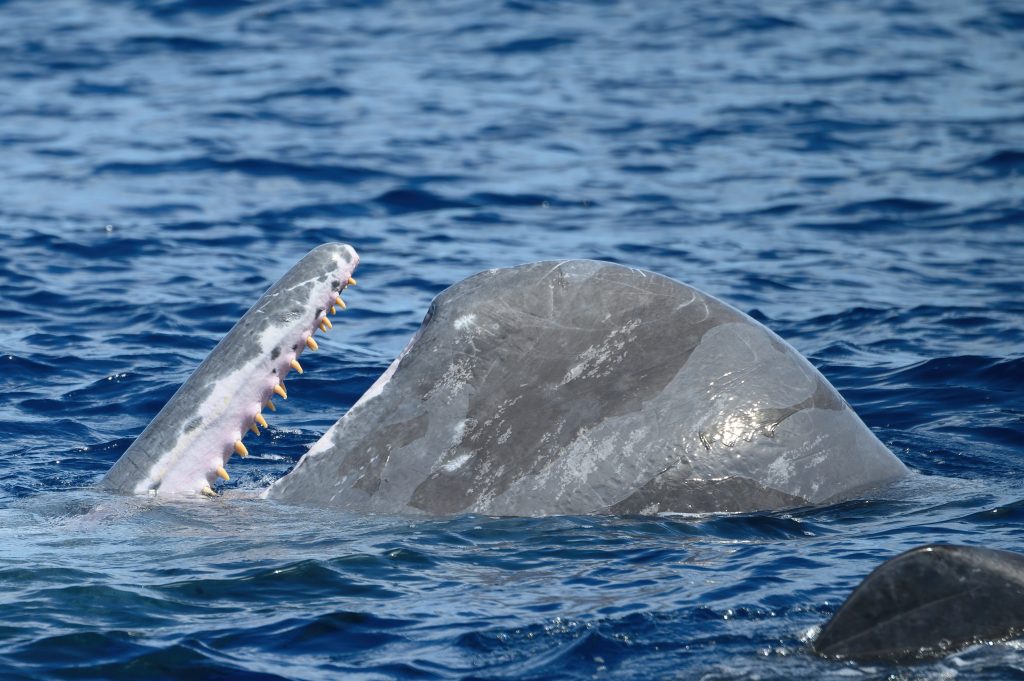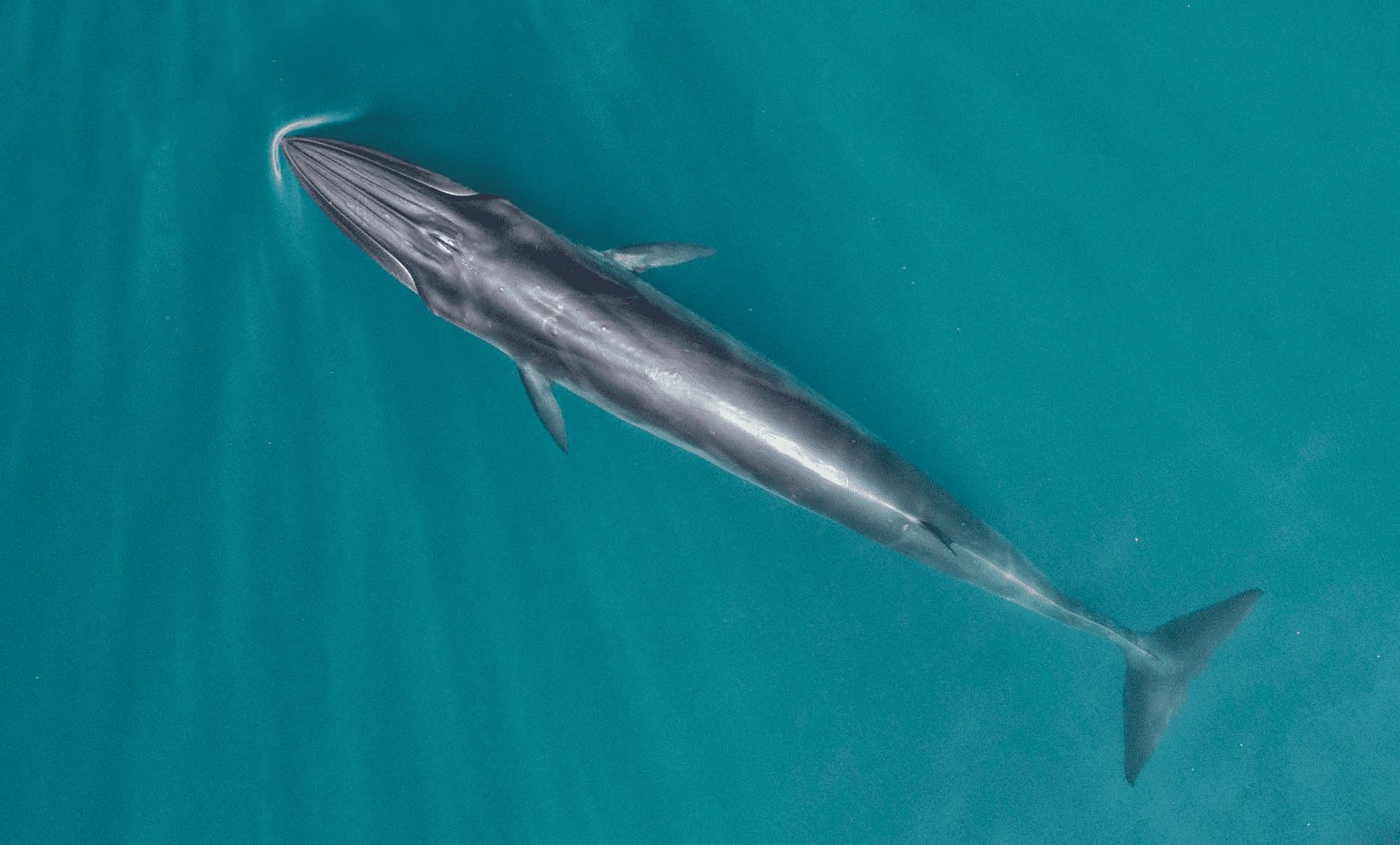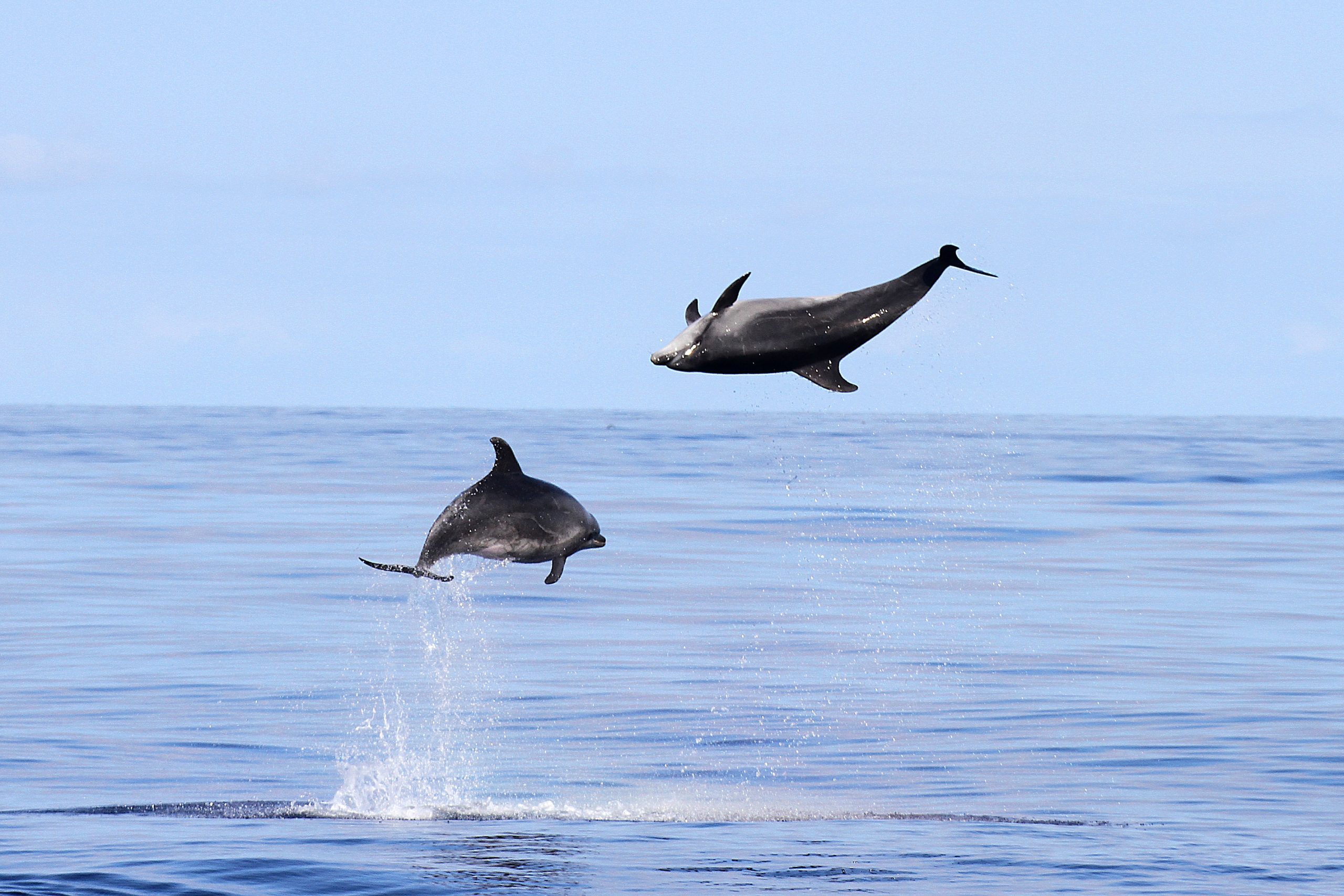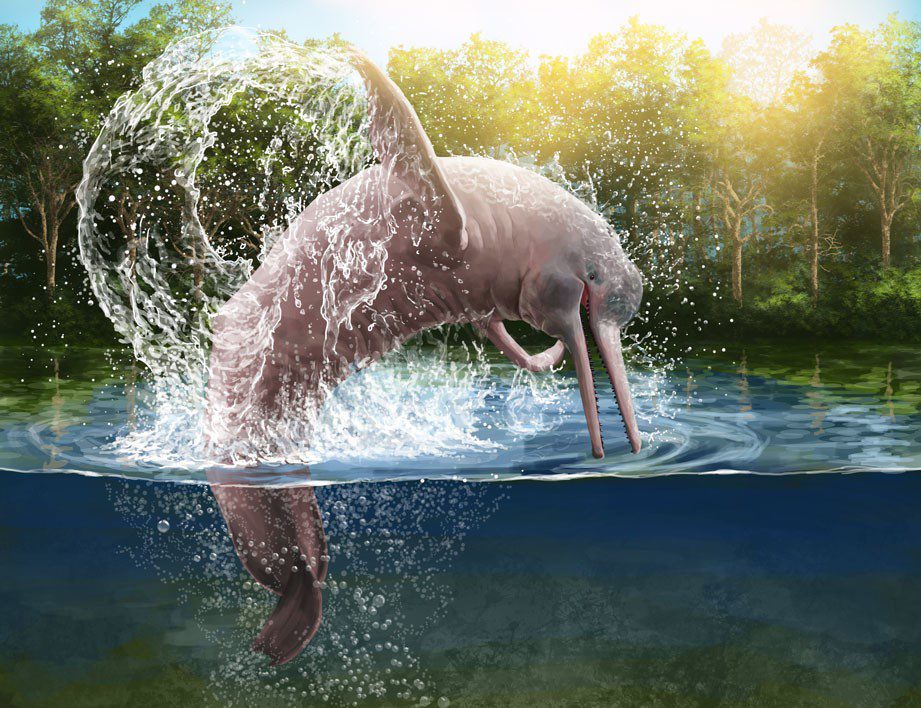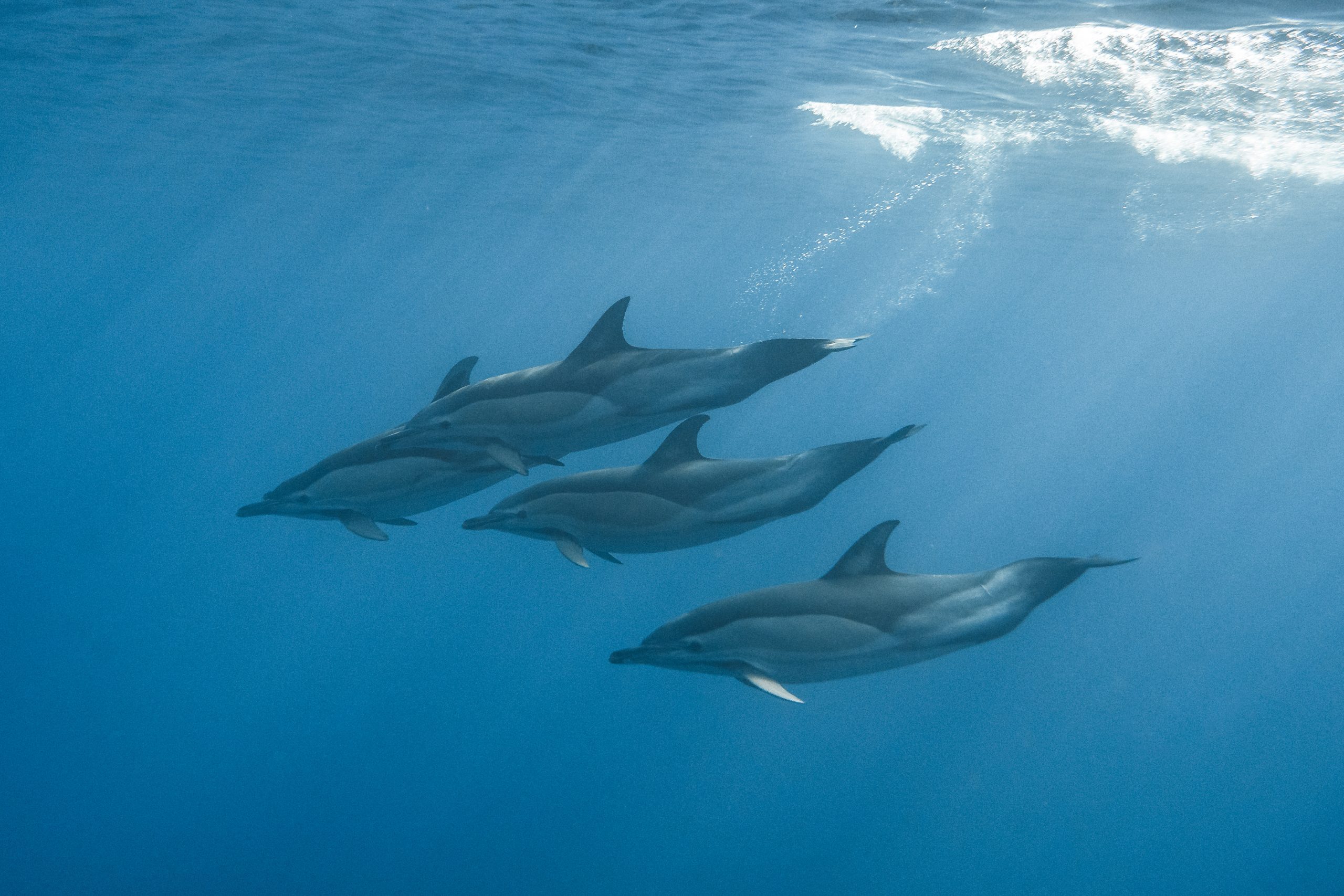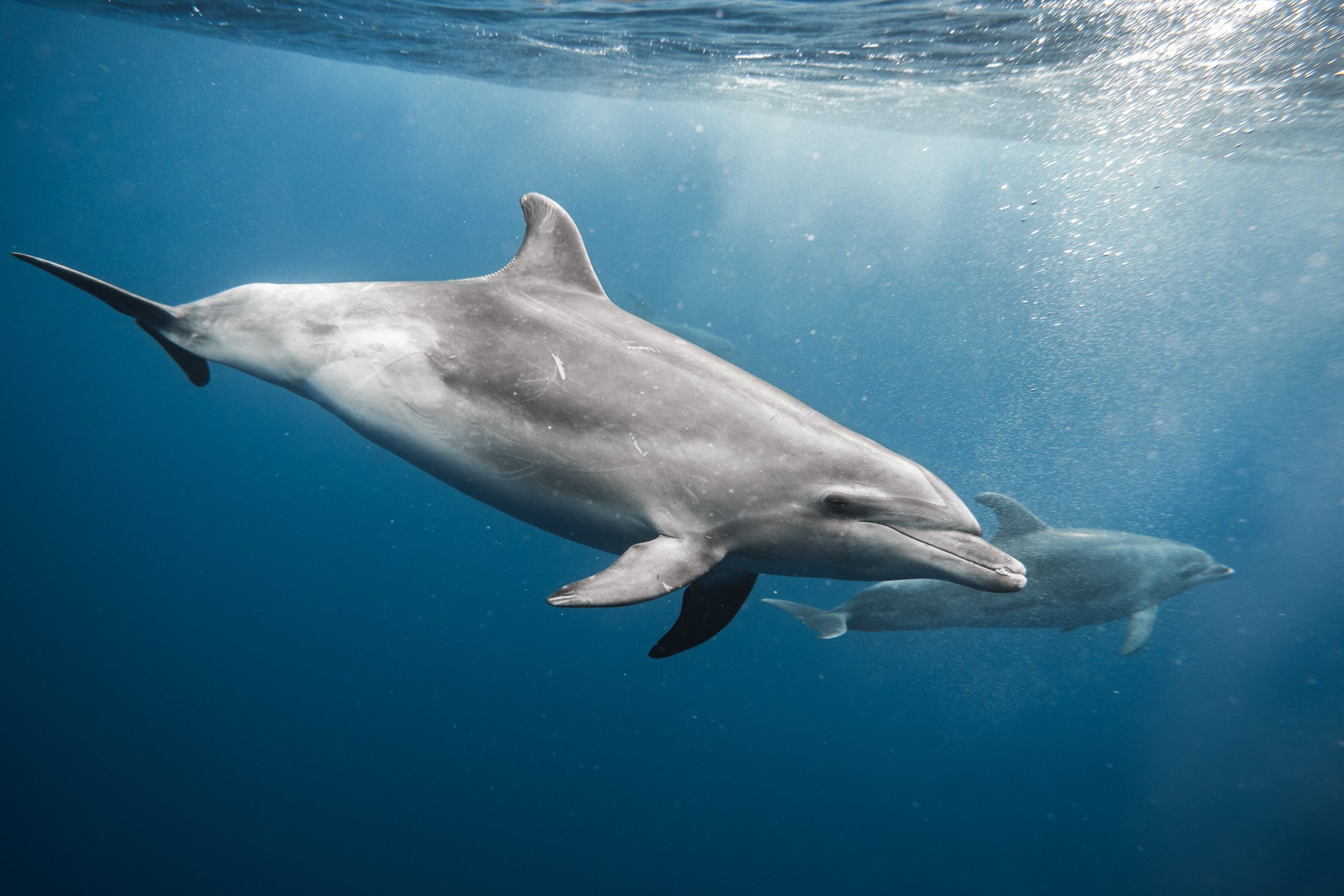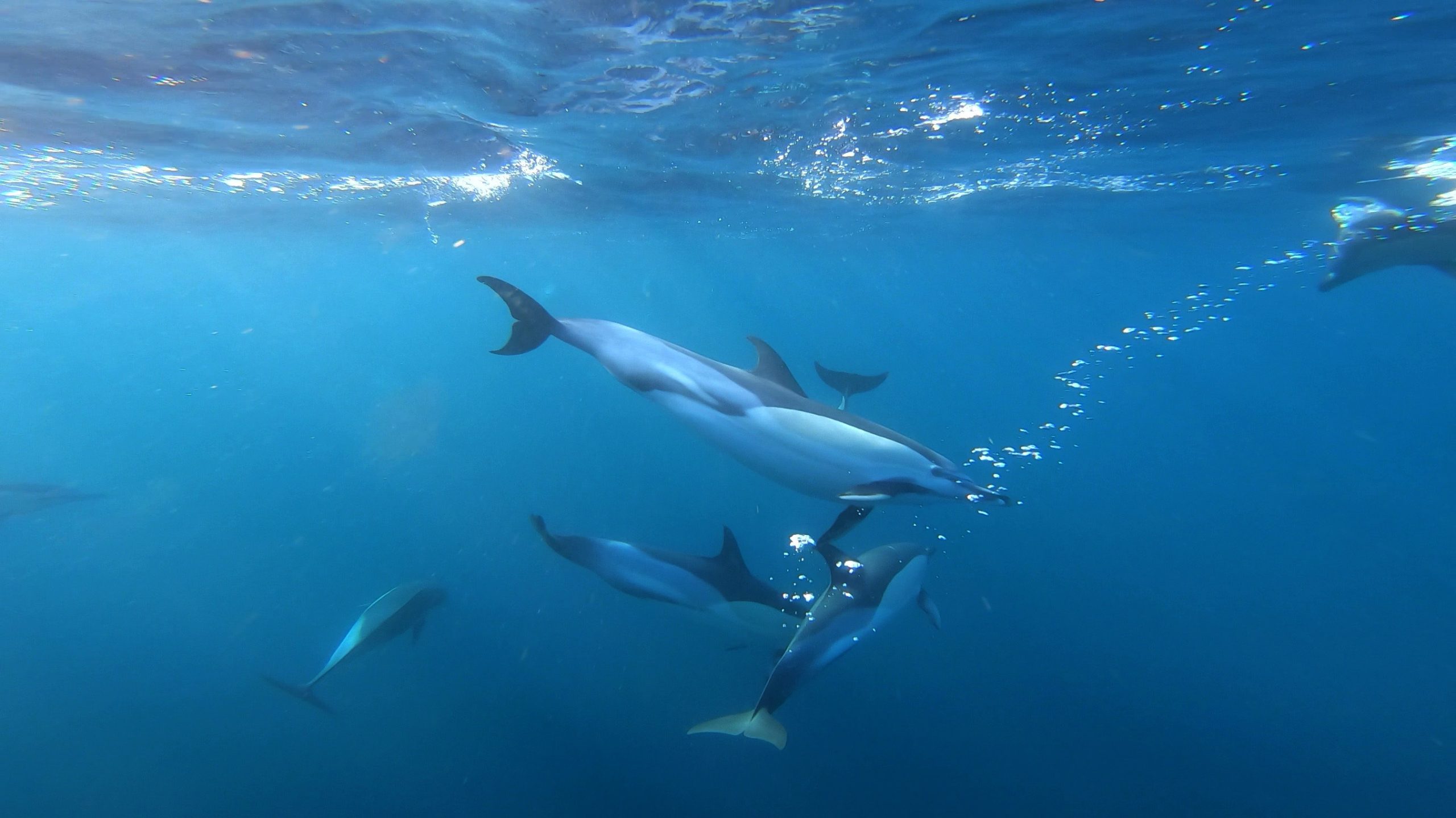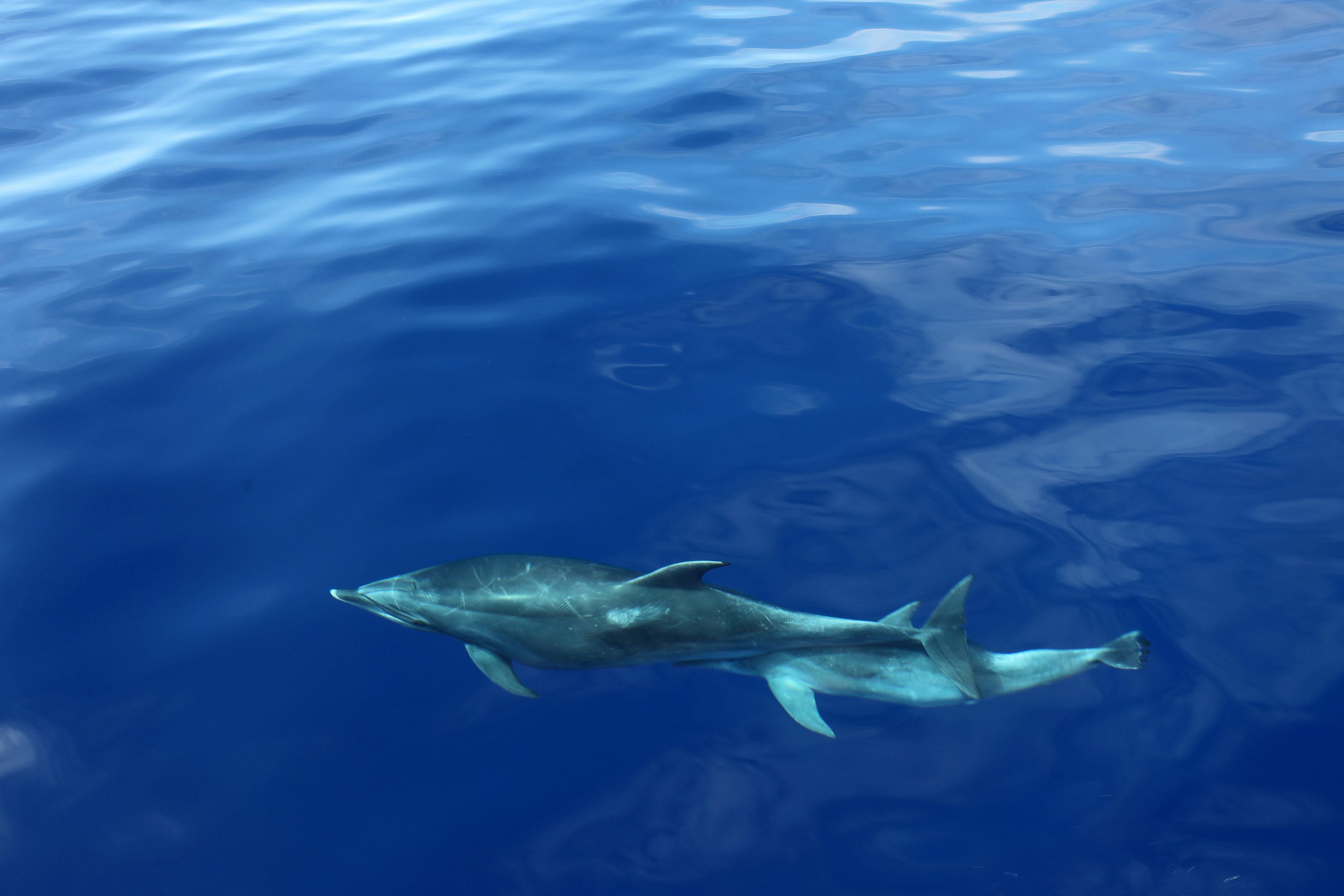There are already more than 40 species of dolphins registered, belonging to various types of ecosystems/habitats, such as estuaries, rivers, coastal waters and even in the high seas, which in itself influences the diet of these beings.
In addition, it is also known that the way they hunt is influenced by the type of food available to them.
In this article, we will explain to you the various types of food that some species of dolphins consume and the various hunting methodologies that these animals can perform.
What do dolphins eat?
These mammals, active predators by nature, usually have a very varied diet, consuming fish, squid and crustaceans.
There are 28 cetacean species present in the Azores region. Of these, 11 are dolphins, which in itself enhances a very similar diet between them.
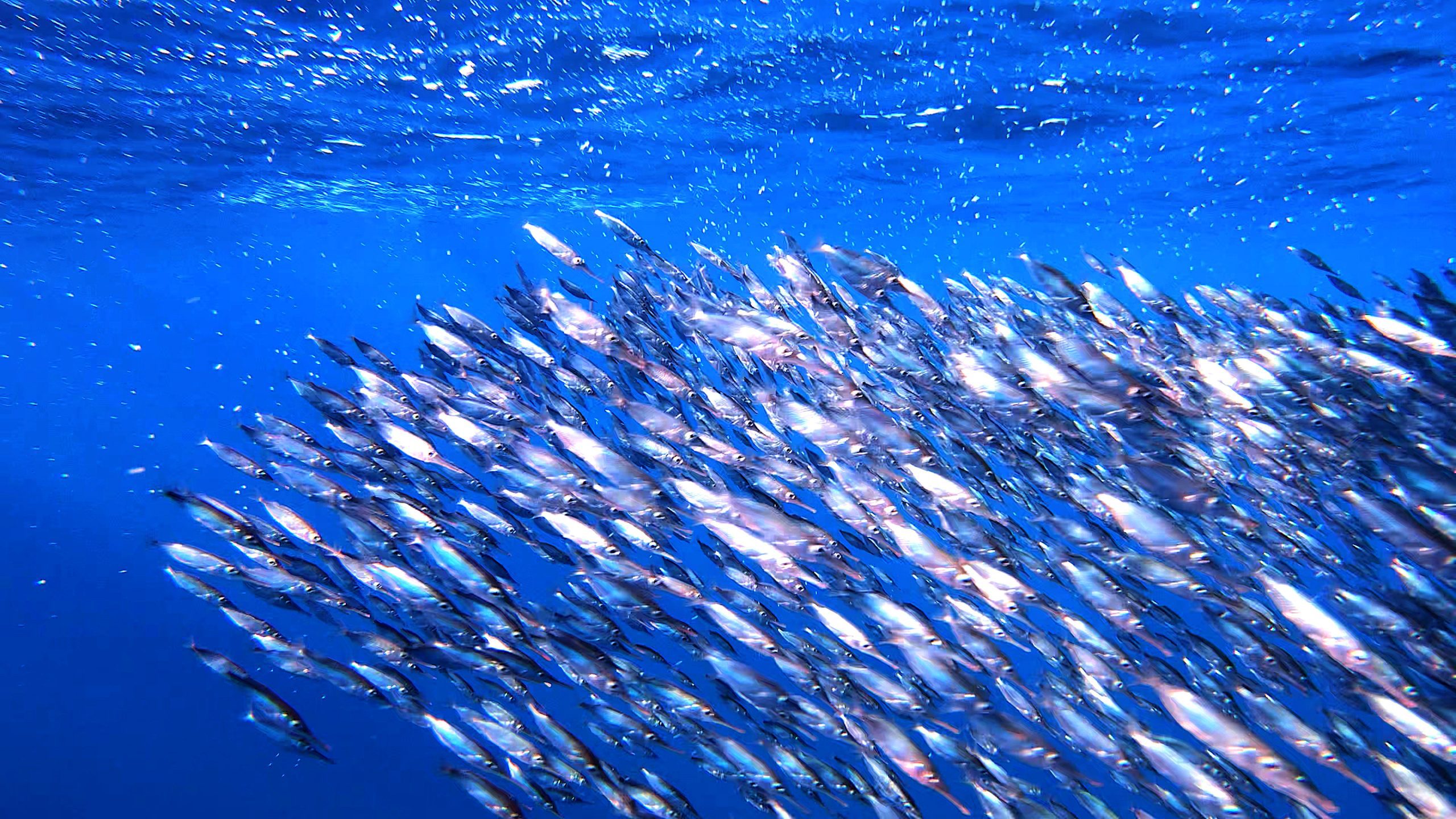
With a wide distribution, the common dolphin is a species that is based on a diet rich in small schools of sardines and mackerel, but can also feed on both squid and crustaceans.
Comparatively, bottlenose dolphins can feed on a wider variety of fish such as corvina, mackerel and mullets, and can also feed on cephalopods and crustaceans.
Risso’s dolphins feed on deep water animals such as squid, octopus and cuttlefish.
As regards the diet of false killer whales, it is known that it is based on large fish such as salmon, albacore and tuna. Additionally, their diet also goes through the consumption of squid and they can still attack and eat other cetaceans.
Last but not least, we have the orcas! Known as formidable predators, this species of dolphin has a highly diverse diet, feeding on up to 150 species, including cetaceans, bony fish, sharks and rays, seabirds, and turtles.
✨ Related articles: Are Dolphins Endangered? | Are Pink Dolphins real? | Do Dolphins Eat Tuna? | Do Dolphins Smell? | Do Whales & Dolphins Lay Eggs?
Dolphin Hunting Methods
Dolphins can have a wide variety of techniques when it comes to hunting, and these depend on the typology of prey in sight and its location.
Fish Whacking
One of the techniques that dolphins use is the “Fish Whacking”, which consists of stunning the fish through a blow with the tail, to be sometimes able to throw the fish and catch it out of water.
Strand Feeding
We also have strand feeding when dolphins create waves to push fish to the edge of the mud. When trapped, dolphins move to that shore temporarily to catch the fish. This technique occurs mainly in rivers and estuaries.
Mud Ringing
Finally, we have the “Mud Ringing”, where a dolphin creates a ring-shaped mud plume, creating a turbidity barrier around the fish. These, when trying to escape through the surface of the water, are caught in the air by the remaining dolphins of the group.
Beaching
Orcas also opt for a great diversity of strategies to feed themselves. One of these strategies is the beaching method of ambushing prey (mostly seals), driving them ashore and then capturing them.
✨ Related articles: How do Dolphins Mate? | How do Dolphins Sleep? | How do Whales & Dolphins Communicate? | How is a Group of Dolphins called? | Top-3 Facts & Curiosities about Dolphins | What Do Dolphins Eat?
Wave washing
In addition to the strategy described above, orcas also use the technique of “wave washing” to dislodge seals from the ice blocks they rest on. To succeed, they must work as a team, creating waves with their bodies to move the ice block, causing the seal to eventually fall into the water.
Carousel feeding
The carousel feeding technique consists of forming a group ball and then capturing the herring of the shoal.
How do dolphins find their prey
Dolphins and other species use echolocation a lot to find their prey.
This evolutionary adaptation gives dolphins the opportunity to differentiate the size and type of fish.

Echolocation is a biological process that involves the production of sounds by biosonars, located in the nasal passages, which are subsequently emitted through the melon (a structure found at the front of the head, represented in yellow in the illustration). These sound waves bounce off targets and are reflected back to the emitting dolphin. The returning echoes are received in the lower jaw (orange sphere) and transmitted to the ear.

Conclusion
As previously mentioned, the Azores are home to a wide diversity of cetacean species. The presence of such a large number of species in this region leads to the formation of various feeding niches and, consequently, a high diversity of feeding techniques.
Considering that different cotypes of the same species may present different feeding techniques, depending on the habitat where they are located, visiting the Azores may represent a unique opportunity to observe unique feeding techniques of certain species. Come with Futurismo to explore the possibility of witnessing special and incredible behaviors!
References
Berta, A. (Ed.). (2015). Whales, dolphins, and porpoises: A natural history and species guide. University of Chicago Press.
Carwardine, M. (2019). Handbook of whales, dolphins and porpoises. Bloomsbury Publishing.


